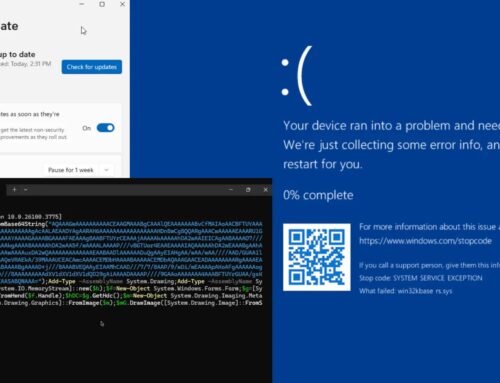
Threat Actors Leveraging ClickFake Interview Attack to Deploy OtterCandy Malware
The digital landscape is a constant battleground, and sophisticated threat actors continually refine their tactics. A recent surge in activity by the North Korean cyberespionage group WaterPlum, also known as Famous Chollima or PurpleBravo, has unveiled a particularly insidious attack vector: the ClickFake Interview attack, designed to deploy the dangerous OtterCandy malware.
This evolving threat demands immediate attention from cybersecurity professionals, security analysts, and IT departments globally. Understanding the nuances of this campaign, from its social engineering roots to the technical capabilities of its malware payload, is crucial for effective defense.
Unpacking the ClickFake Interview Attack
The ClickFake Interview attack leverages classic social engineering principles but with a refined execution. Threat actors initiate contact, often impersonating recruiters or hiring managers from legitimate companies, to lure unsuspecting individuals into what appears to be a genuine job interview process. This initial communication typically involves personalized emails or messages, often referencing fabricated job opportunities tailored to the target’s professional profile.
The critical phase involves the delivery of a malicious attachment or a link to a compromised website, disguised as interview preparation materials, a prerequisite for the interview, or even the interview platform itself. These deceptive elements are designed to trick the victim into downloading and executing the OtterCandy malware.
This tactic preys on job seekers’ vulnerabilities and the natural desire for career advancement, making it a highly effective method for initial access. The meticulous preparation and targeted nature of these attacks bypass many traditional security awareness trainings by crafting a believable, low-suspicion scenario.
OtterCandy: A Cross-Platform Threat
OtterCandy is not merely another piece of malware; it represents a significant advancement in WaterPlum’s arsenal. This sophisticated strain functions as a cross-platform Remote Access Trojan (RAT) and information stealer, indicating a dangerous evolution in the group’s capabilities. Building upon features observed in previous malware families like RATatouille and OtterCookie, OtterCandy is designed for maximum persistence and data exfiltration.
Its cross-platform nature means it can effectively compromise systems running various operating systems, broadening WaterPlum’s attack surface and making detection and remediation more complex. Key capabilities of OtterCandy include:
- Remote Access: Gaining unauthorized control over compromised systems, allowing attackers to execute commands, manipulate files, and maintain persistence.
- Information Theft: Exfiltrating sensitive data, including credentials, financial information, intellectual property, and other confidential files.
- System Monitoring: Recording keystrokes, capturing screenshots, and monitoring user activity to gather intelligence.
- Persistence Mechanisms: Employing various techniques to ensure it reinstalls and reactivates even after system reboots or manual removal attempts.
The combination of these features makes OtterCandy an extremely potent tool for cyberespionage and data theft, aligning perfectly with the known objectives of North Korean state-sponsored groups.
WaterPlum’s Modus Operandi and Evolution
WaterPlum, also identified as Famous Chollima or PurpleBravo, has a well-documented history of engaging in cyberespionage and financially motivated attacks. Their campaigns often target government agencies, defense contractors, academic institutions, and organizations in critical infrastructure sectors. This group is known for its advanced social engineering tactics and its ability to continually develop and deploy new malware strains.
The emergence of OtterCandy signifies a continued investment in sophisticated tooling, demonstrating WaterPlum’s commitment to enhancing their operational capabilities. By integrating features from previous malware, they streamline development and deployment, making their attacks more efficient and harder to trace. The focus on cross-platform functionality underscores a strategic move to maximize their reach and impact across diverse technological environments.
Remediation and Defense Strategies
Defending against advanced persistent threats like those employing the ClickFake Interview attack and OtterCandy malware requires a multi-layered and proactive security approach. Organizations must prioritize both technical controls and robust security awareness training.
- Enhanced Email Security: Implement advanced email filtering and anti-phishing solutions that can detect and block malicious attachments, suspicious links, and impersonation attempts. DMARC, SPF, and DKIM records should be properly configured.
- Endpoint Detection and Response (EDR): Deploy EDR solutions capable of detecting anomalous behavior, fileless malware techniques, and cross-platform threats like OtterCandy. These tools provide visibility into endpoint activities, enabling rapid threat detection and response.
- Network Segmentation: Isolate critical systems and sensitive data through network segmentation to limit the lateral movement of threat actors should an initial compromise occur.
- Security Awareness Training: Regularly train employees to recognize social engineering tactics, particularly those related to job offers, recruitment, and unexpected attachments. Emphasize verification processes for all unsolicited communications.
- Least Privilege Principle: Enforce the principle of least privilege for all users and applications. Restrict user permissions to only what is absolutely necessary for their roles to minimize the impact of a compromised account.
- Regular Software Updates: Ensure all operating systems, applications, and security software are regularly patched and updated to remediate known vulnerabilities.
- Incident Response Plan: Develop and regularly test a comprehensive incident response plan. This plan should include procedures for detection, containment, eradication, and recovery in the event of a successful cyberattack.
Detection Tools for OtterCandy & ClickFake Interview Tactics
| Tool Name | Purpose | Link |
|---|---|---|
| Advanced Email Gateways (AEG) | Detect and block sophisticated phishing, spoofing, and malicious attachments often used in ClickFake attacks. | Gartner Email Security Reviews |
| Endpoint Detection & Response (EDR) Solutions | Real-time monitoring, behavioral analysis, and threat hunting to detect OtterCandy’s activity on endpoints. | Gartner EDR Reviews |
| Network Intrusion Detection/Prevention Systems (NIDS/NIPS) | Identify and block suspicious network traffic patterns associated with OtterCandy C2 communications or data exfiltration. | SNORT |
| Threat Intelligence Platforms (TIPs) | Integrate IOCs related to WaterPlum/OtterCandy to enhance detection capabilities across security tools. | MISP Project |
| Security Information and Event Management (SIEM) | Aggregate and analyze security logs from various sources to correlate events and detect multi-stage attacks. | Splunk |
Key Takeaways for Cybersecurity Professionals
The ClickFake Interview attack, coupled with the potent OtterCandy malware, underscores the persistent and evolving threat posed by groups like WaterPlum. These actors are financially and politically motivated, continuously adapting their strategies to bypass defenses. Staying informed about their tactics, techniques, and procedures (TTPs) is paramount.
Organizations must adopt a proactive, defense-in-depth security posture, combining robust technical controls with continuous security awareness training. Vigilance, verification, and a healthy skepticism toward unsolicited communications are indispensable in mitigating the risks posed by such sophisticated cyberespionage campaigns.





